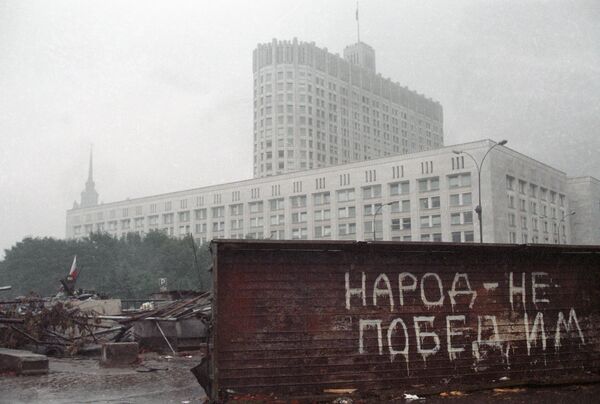The year 1991 was a turning point for Russia. In its significance, it can only be compared to the October Revolution of 1917, when the Bolsheviks seized power after the tsar was overthrown. The revolution of 1991 destroyed the Soviet Union and gave rise to a new sovereign nation, the Russian Federation. The Soviet era gave way to a new age.
Twenty years have passed. An entire generation has grown up with no memory of the “greatest geopolitical catastrophe of the century,” as Vladimir Putin described the collapse of the Soviet Union. Even adults at the time have forgotten much in the intervening 20 years.
But, as Russian citizens, we must not forget anything, because 1991 was the year when the new Russia was born.
The news agency RIA Novosti, the newspaper Moscow News and the magazine Russia in Global Affairs have teamed up to offer readers a sweeping panorama of 1991, beginning with the dramatic events in the Baltics in January and ending with the day in December when the red Soviet flag flying over the Kremlin was replaced with the white, blue and red flag of the new Russia.
Devastating economic collapse, a referendum on the preservation of the USSR, Russia’s first presidential election, the August coup, the ban on the Soviet Communist Party, and the “parade of sovereignties” – these were the highlights of that fateful year.
Our collaborative project tells the story of 1991 through archival documents, recollections of eyewitnesses and participants, expert analysis, and views from foreign observers. We will also offer a behind-the-scenes look in the corridors of power and glimpses of everyday life.
The process that began in 1991 rapidly snowballed, catching the entire Soviet Union by surprise. It has since become history, and we cannot change it, for better or worse. But enough time has passed to start searching for answers to the big questions. Was the collapse of the Soviet Union inevitable, or was there an alternative? And have we learned from the mistakes of that difficult period?
We must look to our past to better understand the present and to avoid repeating our mistakes in the future.

